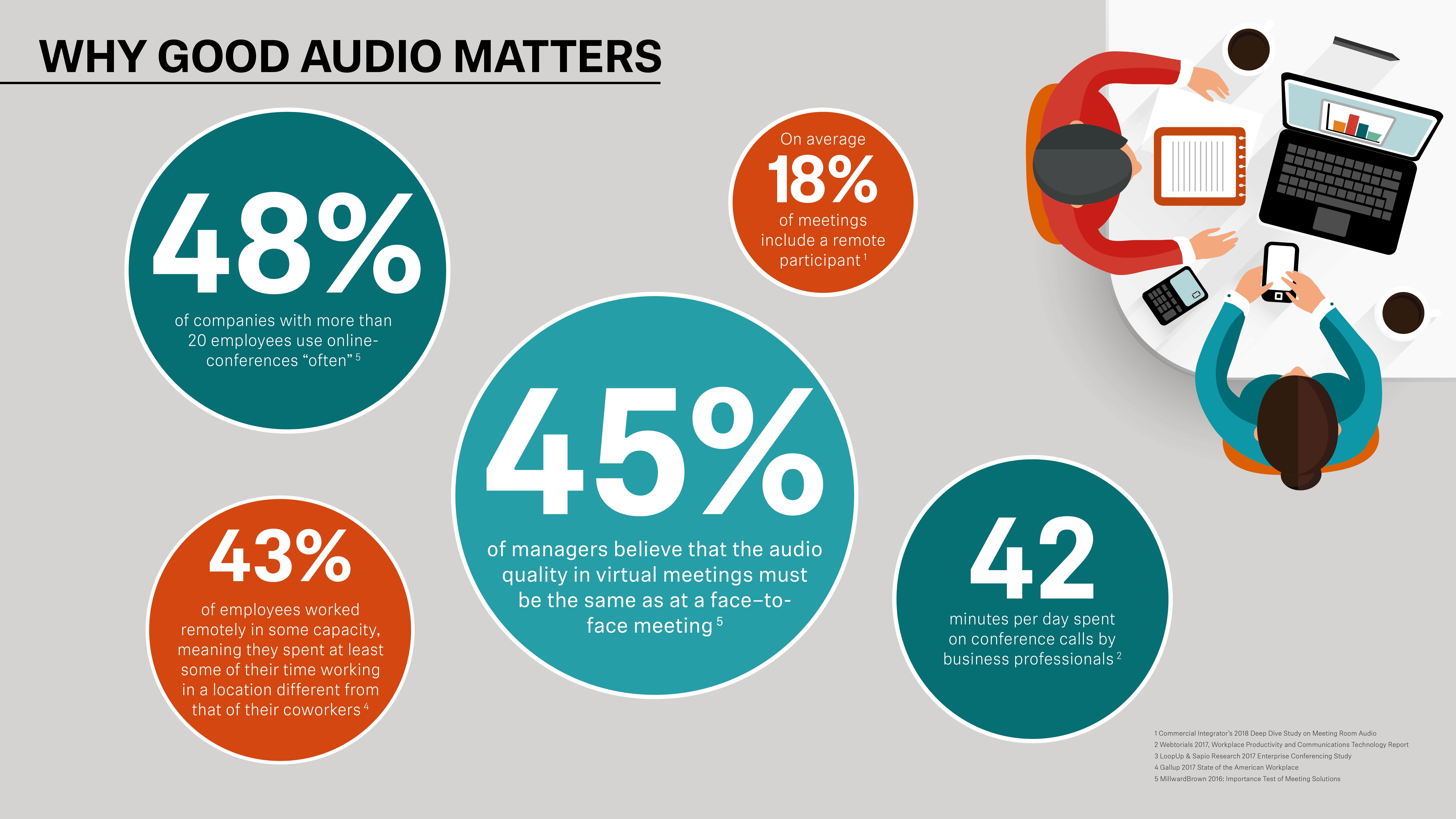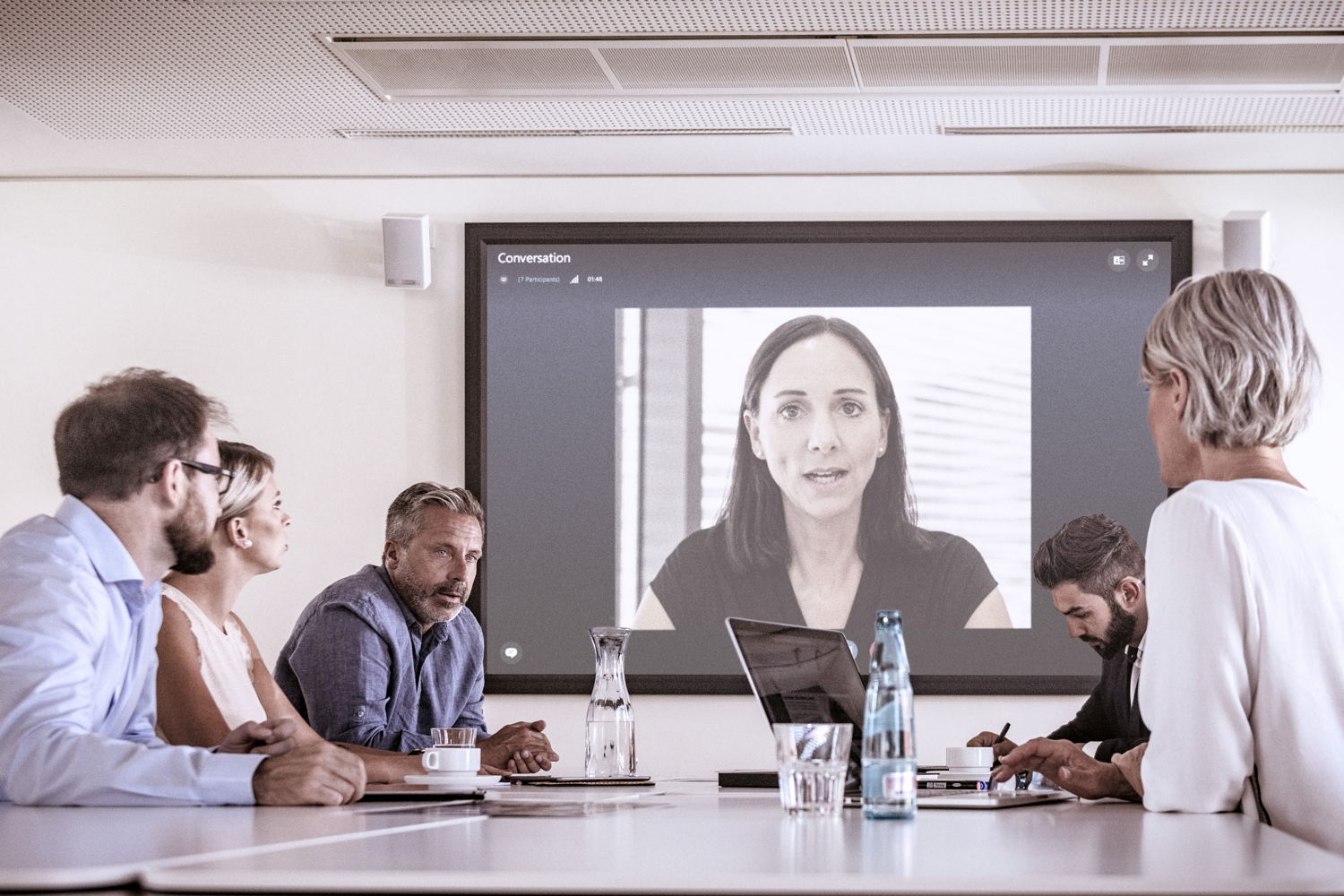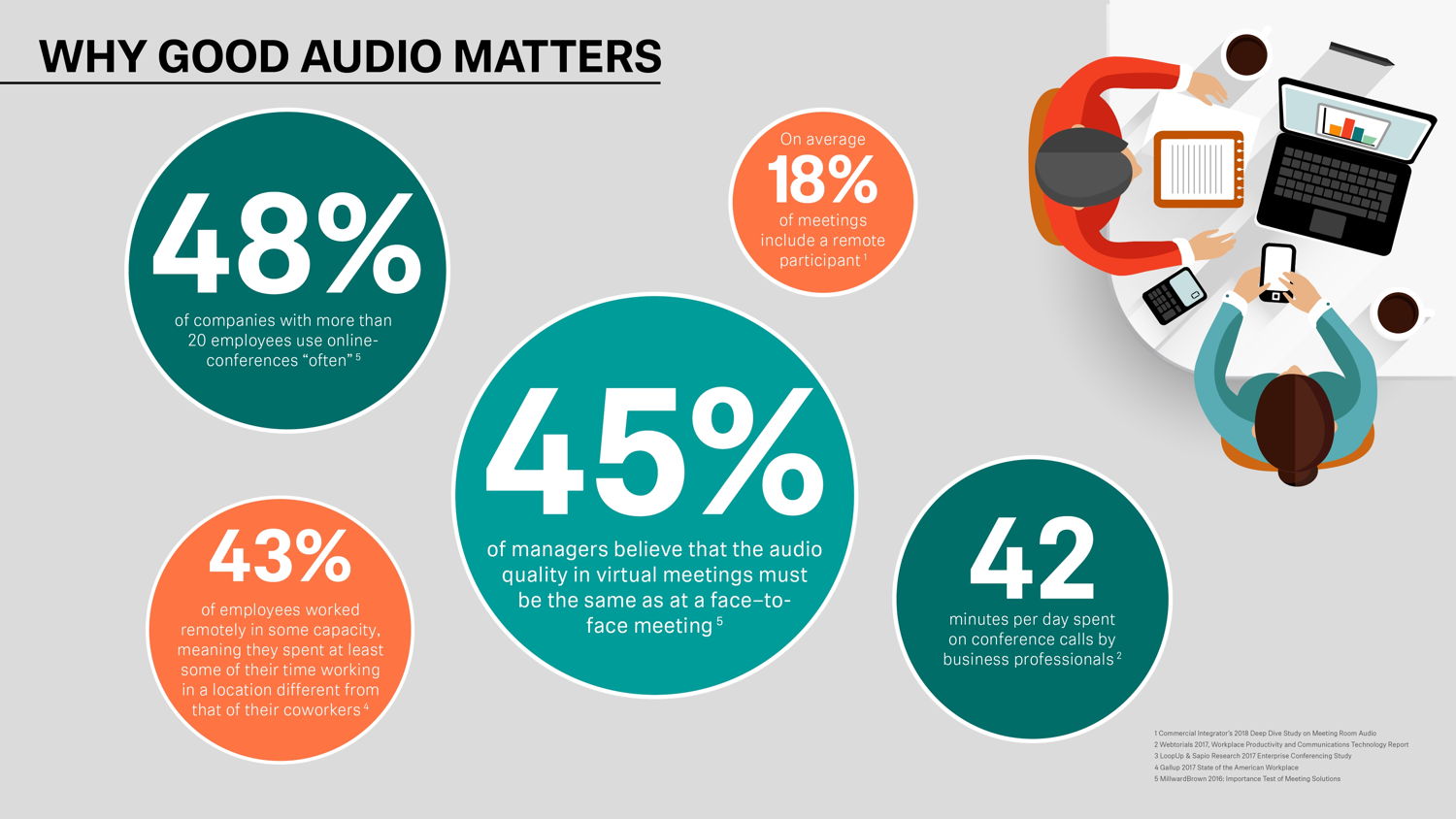How good audio can propel your business forward
23 July 2019

Audio quality is a new frontier in digital transformation
Wedemark/Sydney, 23 July 2019 – Get in touch. Reach out. Contact. There’s a reason why we think of getting closer when we talk about communication. In every aspect of life it’s important to listen to others and to be heard – and especially so in business. Better communication is the key to effective teamwork and to better understanding customers’ needs. Yet as digital technologies accelerate the pace of modern business and enable more agile, flexible working practices, too often communication is the weak link. The experience of conference calls let down by hard-to-use technology and poor sound quality is a familiar frustration but such second-rate experiences are no longer acceptable: “As businesses embrace new ways of working, good sound quality is being understood as a way to make remote meetings and conversations as effective as being there in person,” explained Kai Tossing, expert for business solutions at Sennheiser. “For modern businesses, good audio matters.”

In today’s increasingly digitized world, agile working practices including mobile and remote working have become the new normal. According to Gallup, 43% of employees in the US worked remotely in some capacity, spending at least some of their time working in a location different from that of their coworkers[1] – whether in a different branch office or even a different country altogether. Working away from an office has been commonplace in sectors like construction or in sales roles, but now mobile technology has provided businesses with greater scope to offer flexible work – for example, as an incentive in a competitive labor market. Hence, the nature of the workforce has changed dramatically, with a tenth of companies’ staff now working from home three or more days a week[2].

“As business becomes more globally interconnected, and as mobility and remote working become the new default, business and team meetings have evolved into an imperfect hybrid,” said Kai Tossing. “In many organisations face-to-face, web- and phone-based modes of collaboration have been meshed together. Even as businesses rely more on these services, many conferencing arrangements are still failing to deliver the necessary level of efficiency and quality to make remote options an adequate substitute for face-to-face communications.”
For example, the average business professional spends 42 minutes per day on conference calls[3], yet research has found that much of this time may be consumed by the inefficiencies of the process: In one particularly striking study, it was found that 15 minutes of a typical conference call are wasted struggling to get the meeting started, overcoming challenges with technology[4].
This productivity gap has serious implications – especially as reliance on online collaboration tools increases. This can not only impede effective work within a company, but can also present a poor impression to the outside world. When engaging with customers or partners, it’s important to do so in a way that reflects the quality and professionalism of your business.
Making digital interactions as efficient as face-to-face contact
“One of the most significant changes in the modern working environment is a shift from a face-to-face communication to digital channels, which is placing greater emphasis on the efficiency and quality of these digitized interactions,” explains Kai Tossing. “Managed poorly, this transition can prove frustrating, but when executed well, we find that many people come to prefer digital meetings.”
According to Millward Brown, 48% of companies with more than 20 employees use online-conferences “often”, with 45% joining conferences using a softphone client such as Skype for Business rather than a deskphone.[5] The same study also found that sound quality is being increasingly understood as being key to the successful use of these tools: 45% of managers believe that the audio quality in virtual meetings must be the same as in face–to-face meetings[6].

“Beyond making conferences easier to join, there’s a clear need to ensure that nothing is lost when substituting new modes of communications with being there in person,” said Kai Tossing. “For example, avoiding remote workers becoming second-class participants in meetings where they can’t hear what is going on in a room, or when longer calls produce fatigue due to poor sound. This is why the best possible sound is increasingly recognized as being essential for effective virtual conversations. Sennheiser’s products address this issue by offering crystal clear sound that makes it easier to interact naturally with customers and co-workers, while providing more intuitive operation to speed the flow of work.”
Ceiling microphones as an easy-to-integrate communications solution
“Good sound becomes recognized as an enabler of successful collaboration,” said Kai Tossing. “One of the audio solutions that sticks out as being particularly user-friendly is the ceiling microphone – just one central microphone in the room is sufficient to pick up the meeting participants.”
Sennheiser’s ceiling array microphone, TeamConnect Ceiling 2, enhances remote meetings, phone and video conferences with optimum sound. No matter whether companies have already made the digital transition or are at the very beginning – TeamConnect Ceiling 2 will adapt to their infrastructure, working seamlessly in both digital and analogue environments.

Elegantly mounted underneath the ceiling, it will automatically pick up the active speaker, following their voice no matter where they move in the room. While other ceiling mic solutions require specific speaking zones to be pre-programmed, the flexible single beam used by TeamConnect Ceiling 2 gives people total freedom of movement and allows for a totally flexible use of the meeting room.
For remote participants, the excellent audio quality offers crystal-clear speech that is free from distracting ambient noise. Conferences are thus enhanced by stress-free, easy interaction that ensures more productive meetings.
“With the superior audio of TeamConnect Ceiling 2, the virtual channels that businesses rely on no longer have to feel like a compromise,” concluded Kai Tossing. “With great audio you can get closer again. With great audio it’s easier to connect.”
More about ceiling microphone TeamConnect Ceiling 2 here and book a free TeamConnect Ceiling 2 audio demo or a live audio room at www.sennheiser.com/teamconnect-ceiling2-demo-spot.
Get your free whitepaper on the beamforming concepts currently used in the market here.
📷 Link to image database
References
[1] Gallup 2017 State of the American Workplace
[2] Commercial Integrator’s 2018 Deep Dive Study on Meeting Room Audio
[3] Webtorials 2017, Workplace Productivity and Communications Technology Report
[4] LoopUp & Sapio Research 2017 Enterprise Conferencing Study
[5] MillwardBrown 2016: Importance Test of Meeting Solutions
[6] MillwardBrown 2016: Importance Test of Meeting Solutions
Why good audio matters_ANZ.docx
DOCX - 2.2 Mb
Why good audio matters_ANZ.pdf
PDF - 318 Kb









